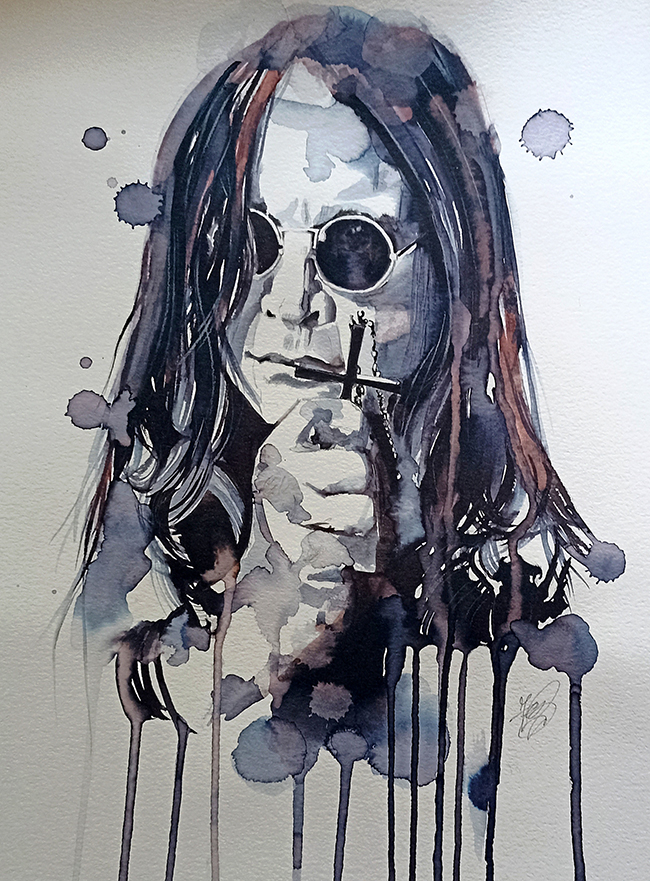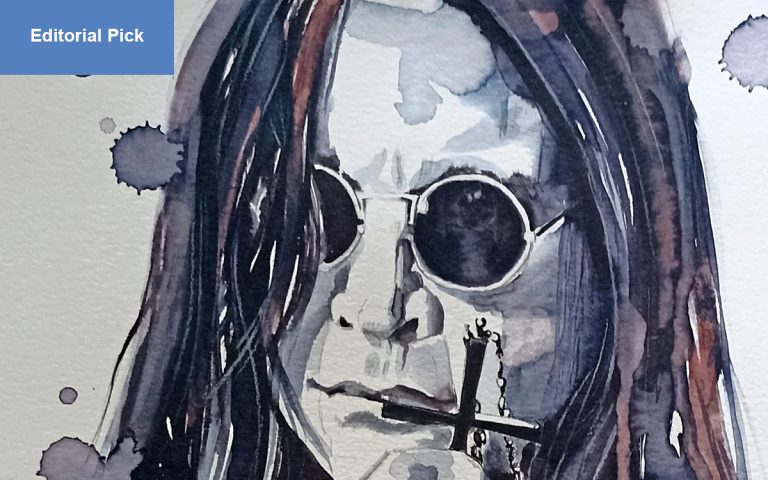Federica Masini is an Italian artist whose creative path has taken shape through the cultures and colors of several countries. Though born and educated in Italy, she has lived and worked in Germany, Spain, and France—each place leaving its mark on her sensibility and style. Her Italian upbringing gave her a deep-rooted appreciation for art history and aesthetics, but it was Berlin that unlocked her own voice. The city’s rawness, contradictions, and energy gave her the freedom to explore. Masini’s work today reflects a life spent observing and absorbing. Her palette is bold, her themes direct, and her approach honest. She navigates personal memory and shared culture with curiosity and warmth, building a body of work that blends personality with reflection.
One of her recent works, a tribute to Ozzy Osbourne, feels especially personal.

A Tribute to Ozzy
This painting is not just a portrait of Ozzy Osbourne—it’s a memory, a mood, and a thank-you note all in one. Federica Masini has admired Ozzy for years, not just for his music, but for his character: eccentric, sincere, and consistently himself. When news spread in July of Ozzy Osbourne’s passing at 77, Masini responded not with words, but with a brush. It was her way of processing the news, of honoring someone who had helped soundtrack some of her most formative and creative moments.
Masini describes the experience as a small cloud darkening an otherwise bright summer. She grew up surrounded by music—rock, punk, and heavy metal—and close friends who played it. They didn’t just listen together; they played together, and those experiences shaped how she sees art. Music, like painting, was about energy and rhythm. It was about being alive.
Her painting of Ozzy doesn’t shy away from his larger-than-life persona. It leans into it. There’s a sense of play, but also respect. The color choices reflect both rebellion and reverence: high-contrast tones, sharp edges, and expressive marks. There’s rawness, but there’s also control. She balances chaos and structure in a way that feels true to her subject.
Though the work is deeply personal, it’s not self-indulgent. Masini invites the viewer into her world by sharing her reasons for painting it. She doesn’t claim to know Ozzy, but she knows what he meant to her. That sincerity comes through in every stroke. The tribute becomes less about Ozzy as a celebrity and more about what he represented: freedom, expression, and the strange beauty of not fitting in.
Masini’s decision to link music and painting in this way isn’t new for her. It’s something she’s explored over time—sometimes subtly, sometimes directly. This work stands out because it’s direct. There’s no distancing. She paints because she feels something. And that feeling is contagious.
The painting also reveals something about Masini’s style: her willingness to mix realism with expressive gestures. She captures likeness, but she doesn’t stop there. She pushes it, warps it slightly, gives it energy. You can see the influence of German expressionism, perhaps a nod to her time in Berlin, but there’s also something distinctly Mediterranean in the warmth and vibrancy of her palette.
As for the technical side, Masini’s control of paint is strong. The surface is active, but not overworked. The composition holds together even as it pulses with movement. It’s the kind of painting you can appreciate from across a room, but also up close, where the brushwork tells its own story.
This tribute to Ozzy Osbourne is more than a one-off homage. It’s part of a larger pattern in Masini’s work—an ongoing dialogue with the things and people that shape her. She doesn’t draw hard lines between disciplines. Art, music, memory, and place all swirl together. And that’s where her strength lies.
In this painting, and in much of her work, Masini offers a way to see the world not as a static place but as a living, shifting rhythm. She doesn’t over-explain. She paints what moves her and lets the rest follow.
That’s what makes the tribute to Ozzy feel alive. It doesn’t just show him—it channels something about him. It’s a moment frozen in color, built from memory, affection, and the quiet, enduring presence of a song you thought you’d forgotten, but somehow still remember every note.

